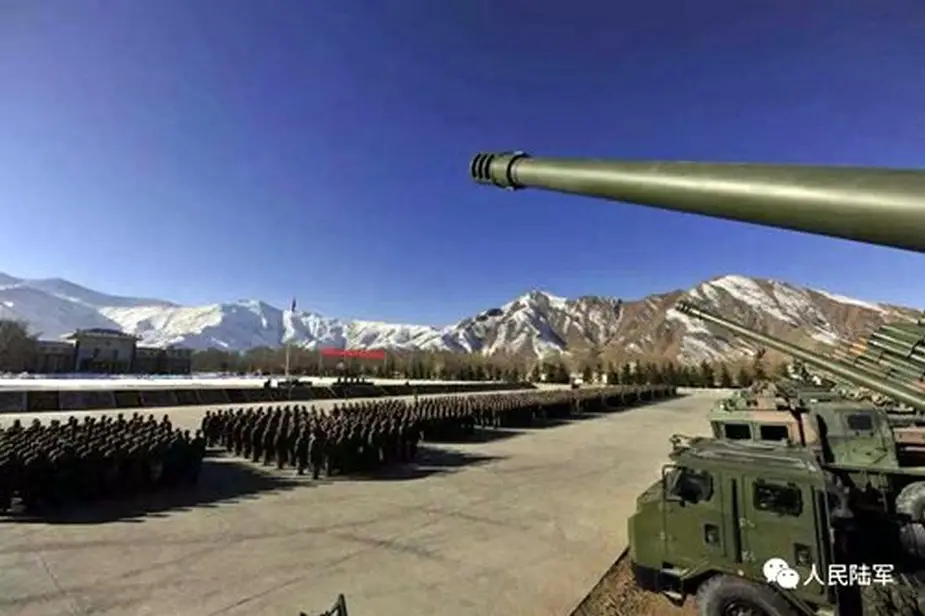Breaking news
Chinese PLC-181 155mm wheeled self-propelled howitzers in Tibet.
The People's Liberation Army (PLA) stationed in Southwest China's Tibet Autonomous Region has just been equipped with new self-propelled howitzers. On 8 January, Army Recognition echoed the ferrying of SH15 ones to the same destination, which leads to wonder whether the same SPH is now in service in two similar versions bearing two distinct designations - SH15 and PLC-181 - or if the same artillery system bears two different designations.

Soldiers of the People's Liberation Army in Southwest China's Tibet Autonomous Region attend a training mobilization meeting with new PLC-181 self-prolled howitzers. (Picture source: courtesy of the People's Liberation Army Ground Force )
According to an article released by the WeChat account of the PLA Ground Force on Saturday, the PLA in the Tibet Military Command is equipped with the new howitzer, which Chinese military analysts said is supposed to be the PLC-181 vehicle mounted howitzer. The equipment was used in an artillery brigade in Tibet during the 2017 China-India stand-off. Song Zhongping, a military expert and TV commentator, confirmed with the Global Times Monday that the howitzer has a 52-caliber cannon with a range of over 50 kilometers and shoots laser-guided and satellite-guided projectiles. It will boost the high-altitude combat capability of the PLA in Tibet, Song said.
As part of military training in 2019, an artillery brigade in the Tibet Military Command ordered soldiers to take part in a military skills competition at a training ground on the Qinghai-Tibet Plateau 3,700 meters above sea level. Video from the China News Service on Sunday shows soldiers engaged in military boxing, standstill shooting and firing in motion, as well as assembling guns on the snowfields to improve their attack capability.
To cope with altitude sickness, the PLA built oxygen stations for the soldiers in Tibet in 2015, which were used for medical purposes, but are now also being used in regularly training, according to a press release on the Ministry of National Defense's website in August 2018.


























